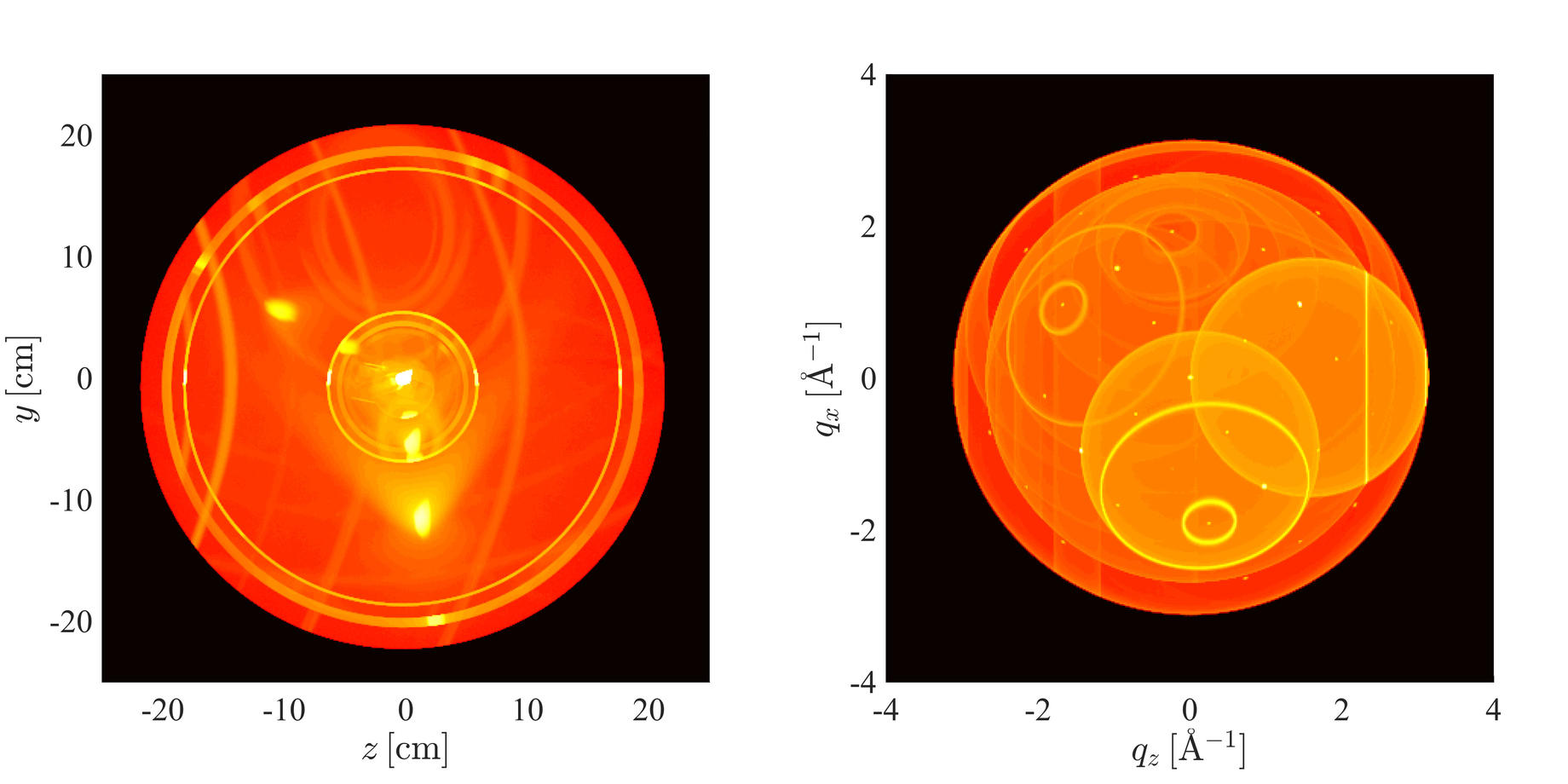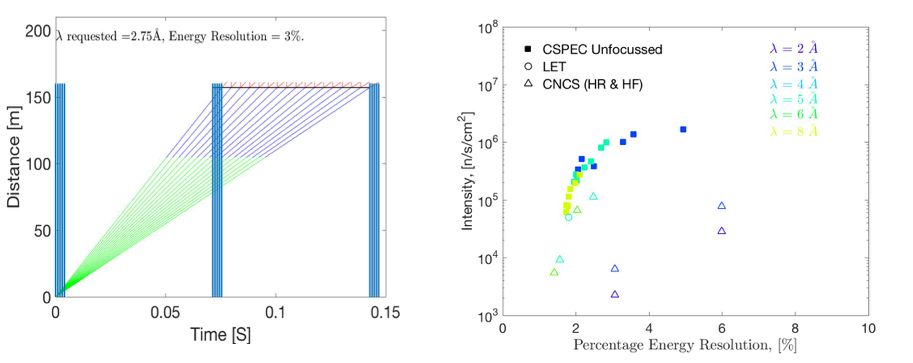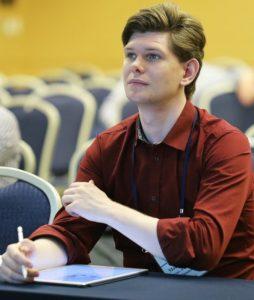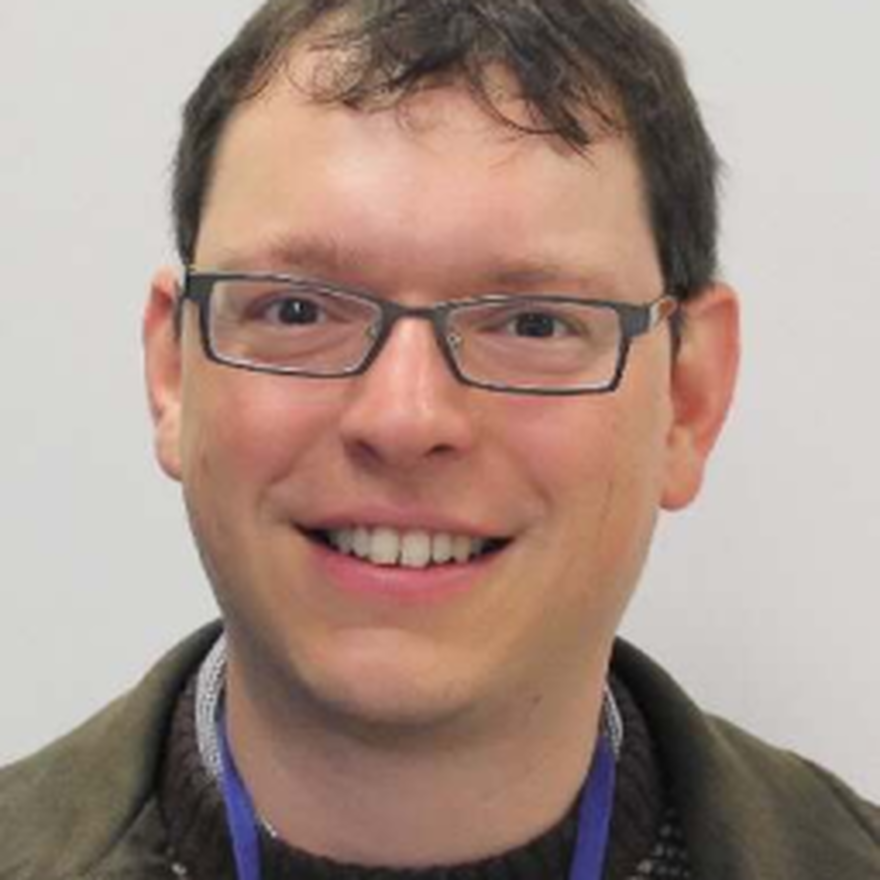
University of Copenhagen postdoc Mads Bertelsen, in coordination with the MAX4ESSFUN Interreg project, is working to help develop the neutron instrument simulation program McStas, a critical tool in both ESS instrument development and data modelling work at DMSC.
COPENHAGEN and LUND—The construction of instruments at the European Spallation Source (ESS) is progressing in lockstep with the development of data analysis and modelling software at the ESS Data Management and Software Centre (DMSC) in Copenhagen. The continuing development of the neutron instrument simulation software McStas by a consortium of institutions, including ESS and the University of Copenhagen (UCPH), is a critical link between these two parts of the project.
Together with the European Union and a number of regional actors, ESS is helping to prepare the next generation of researchers to maximise the impact of the facility’s unique capabilities, unprecedented power and world-leading scientific instruments. This is happening locally in Sweden, Denmark and Norway through engagement with the many research universities clustered in Scandinavia.
The European Union programme Interreg Öresund-Kattegat-Skagerrak (ÖKS) is providing 50 percent matching funds for the €19 million programme ESS & MAX IV: Cross Border Science and Society, begun in 2015. The three-year programme is led by Sweden’s Region Skåne and co-lead partner Region Hovedstaden, in Denmark. It includes 27 partner organisations in Sweden, Denmark and Norway, and will continue through August 2018.
The flagship Cross-Border program is the €13.6 million MAX4ESSFUN. In cooperation with ESS and the MAX IV synchrotron in Lund, MAX4ESSFUN aims to build user capacity for the two facilities by directly financing experiment projects, training, and supervision for PhD and postdoc researchers at eight universities in the ÖKS region.
The scope of the project is large, including 176 six-month-long experiment projects performed at operational neutron and light-source facilities and an educational component including courses, workshops and summer schools. Collectively, the project makes possible 1,000 months of training and 500 months of instructor time with senior researchers, including scientists at ESS.
Better Background Means Better Research
Mads Bertelsen is a postdoc at UCPH's Niels Bohr Institute (NBI). Working with Kell Mortensen at NBI and ESS scientist Alexander Holmes, Bertelsen is developing an extension to the McStas neutron instrument simulation software package that aims to provide better background correction during simulations of neutron scattering experiments.
The European Spallation Source will enable more detailed probes of materials and biological samples across a broad spectrum of resolutions, from the atomic to the visual scale. This is due to the extraordinary increase in neutron brightness the facility's technologies will produce. In order to make the best use of these advances, the instruments, their shielding, sample environments and detectors, and the DMSC's data analysis and modelling tools, must be developed to advance accordingly.
With so many neutrons scattering off a sample, reducing background noise is a key challenge in every aspect of an instrument's design. Mads Bertelsen's software research with MAX4ESSFUN will contribute to the development of technologies and methods critical to dampening the effects of background noise at ESS and other neutron science facilities.
This interview was first published in Danish in the ESS & MAX IV: Cross Border Science and Society newsletter on January 31, 2018, and has been lightly edited.
Young researcher within MAX4ESSFUN: Mads wants to improve other scientists’ possibility to research
January 31, 2018
ESS & MAX IV: Cross Border Science and Society
Young researcher: Mads Bertelsen
University: University of Copenhagen
Experiment: Better background correction: Modelling multiple scattering and background from neutron sample environment by simulation and experiment
Supervisor: Kell Mortensen, University of Copenhagen
Co-supervisor: Alexander Holmes, ESS
Mads Bertelsen completed his PhD in physics in September 2017, after which he was appointed as postdoc at the Niels Bohr Institute at the University of Copenhagen using funds from, amongst others, MAX4ESSFUN. The funds from MAX4ESSFUN make it possible for Mads to test and validate an extension of the neutron ray-tracing software package, McStas, which Mads helped to develop during his PhD.
A simulation of reality
The McStas software extension aims to predict aspects of the experiments performed at ESS via simulation. The software can, for example, evaluate background effects and how small decisions will affect a given measurement:
“The project I will carry out via MAX4ESSFUN is a validation of a simulation. The Interreg money will be used so I can go and test a simulation against reality—measure all the small details—to make sure that the correlation between my software and how it is in reality is as good as possible.”
Mads has applied as much from ‘the real experimental world’ as possible in the software, so the software already has a lot of information on everything from instruments to background factors. A further advantage of simulation is that you have much more information about what actually happens in the individual experiment, and that you can go in and see exactly which route the neutrons take through the experiment.
With his research, Mads wants to develop software that can help other researchers improve their data analysis and thereby improve research in general:
“It is enormously rewarding to be allowed to be in a position to help push people's questions forward as I've become an expert in the problems, the sources of the problems, and the annoying aspects, instead of focusing on the aspects that more easily generate headlines. My goal as a researcher is not to perform science itself, but to improve the possibility for others to do so.”
Enormously relevant for ESS’s Data Management and Software Centre (DMSC)
Mads sees a good possibility of working at ESS or ESS’s data centre in Copenhagen once he has finished his postdoc. In an agreement between Sweden and Denmark, it has been defined that there will be up to 60 employees for the development and management of software to support the ESS facility. In his future role at ESS, Mads would like to work on making the tools for ESS, the user experience, and the utilisation of the machine as good as possible:
“What I'm most passionate about is without doubt improving the experience of others at ESS. If I make ESS 10% better and ESS has a socially beneficial function, then I've improved that by 10%. I would rather do something that is accessible to the whole population than do something for myself. I believe that the research that is being carried out at ESS is socially relevant, and so I would like to help.”
Network across the Sound
The task at ESS has provided Mads with a lot of contacts across the Öresund in Sweden. The Interreg project creates many opportunities to talk together more often and gives a sense of the size of the project:
“It is good to travel a bit back and forth across the regions, otherwise one can quickly forget how big a project it really is.”
Having Alexander Holmes from ESS as co-supervisor has been particularly relevant to Mads. Alexander always has great ideas on how to set up situations in the best possible way to challenge Mads software so that the software can be tested and shaped to suit ESS's needs.
As soon as Mads’ software is complete, and he trusts it, he is ready to share it with other researchers to help them with their experiments and analyse their trials with them.
Mads Bertelsen is a postdoc in X-ray and Neutron Science at the Niels Bohr Institute of the University of Copenhagen.
Translation: Marie Powell





























